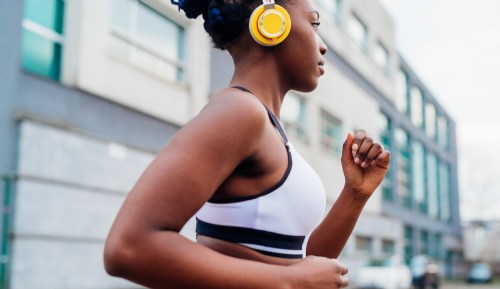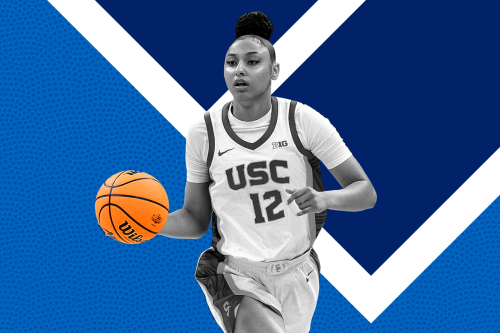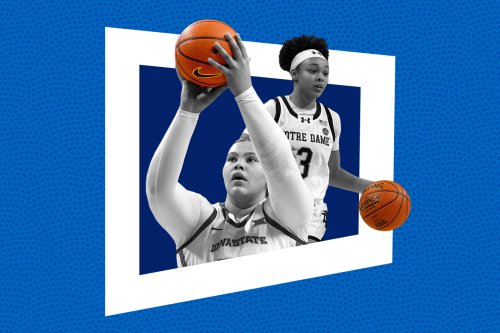Our editors independently select these products. Making a purchase through our links may earn Well+Good a commission
Do You *Really* Need To Throw Out Your Sports Bra After 6 Months?
Here's how to keep this functional garment working hard (and out of the landfill) with tips for how to maximize the life of your sports bra.

A good sports bra is a necessity for most runners, HIITers, cyclers, and, well, anyone with boobs who likes to move. Not only does it limit the pain of your breasts bouncing up and down, but it also maintains the structure of your breast tissue over time and prevents injury.
Experts in This Article
“If you have a heavier breast tissue and you’re doing a workout without being properly supported, you can actually risk injury to your Cooper’s ligament, which is what helps keep your breasts up and in place,” Jessica Pfitser, the vice president of Le Mystère, previously told Well+Good. “When you’re doing a rigorous workout without that support, it actually breaks down the tissue.”
A sports bra is a piece of functional clothing, meaning that it has a job to do. High-tech materials and engineering have created garments that support but don’t pinch, absorb sweat and let your skin breathe, and mold to your body while maintaining structural integrity.
But because sports bras are made of materials like spandex, polyester, or nylon that naturally wear out over time, making sure they still do their job is something sports bra–wearers should pay attention to. As a result, a piece of conventional wisdom, including from Well+Good, has arisen from the industry: That you should replace your sports bra every six to 12 months.
It’s worth taking a second look at this number, because putting a sports bra in the trash means you’re sending carbon-derived materials to the landfill.
Gold Medal Couple Tara Davis-Woodhall and Hunter Woodhall Talk Marriage, Motivation, and Their Next Chapter With Nike

Coach Kara Lawson Wants You to ‘Handle Hard Better’—and Here Are 3 Ways to Do Just That

JuJu Watkins Leaves March Madness With ACL Tear—and This Knee Injury Is More Common Than You Think

“With activewear so often derived from synthetic fibers, mainly fossil fuels, there are such issues with end-of-life that we all need to be mindful of what demand we place on the market,” says Ciara Barry, the policy and campaigns manager at fashion industry sustainability organization Fashion Revolution. A garment like a sports bra typically requires fossil fuels to make, and then further pollutes when it’s discarded since most clothing is difficult to recycle—85 percent of clothes in the U.S. end up incinerated or in landfills.
Unfortunately, as anyone who’s owned a sports bra, bathing suit, or favorite pair of leggings knows, clothing with elastic in it does reach a point when it needs to be taken out of your rotation. But Barry encourages people to make the determination of when that is for themselves, and not to rely on a piece of general advice that may not reflect how often you use your sports bra, how you use it, or how well it’s stood the test of time.
“As citizens, not just consumers, we all need to become more in tune with our bodies and what they are telling us as we move,” Barry says. “You can know whether a sports bra remains supportive and functional to you based on how your body feels as you exercise. That is what I would deeply encourage people to think about, rather than some arbitrary time scale of six months.”
There are also steps you can take to ensure your sports bra lives a long and healthy life. Quang Dinh, CEO at Girlfriend Collective, explains that the way you wash and dry your clothes can make a big difference. “We recommend using cold water with mild, non-bleaching detergents and hanging it to dry,” Dinh says. “Washing with cold water and air-drying not only helps the bra maintain its original shape and elasticity for longer (hot water and heat dryers deteriorate fabrics faster), it also conserves energy.”
One issue that can arise with cold washing and air drying, however, might be a less-than-pleasant scent caused by mildew. But don’t let that make you retire your sports bra. “If there is a stubborn smell that’s sticking around, try soaking in vinegar to kill any odor-producing bacteria,” Dinh says.
You can also try drying your sports bras in the sun, and look for quick-drying bras (like Girlfriend Collective’s) “so they dry faster and avoid the dreaded mildew.”
Of course, there will still come a time when you need a new sports bra. Fortunately, several athletic wear brands today are investing in more eco-friendly design options. Tentree, for example, uses sustainably-sourced and recycled materials, and plants ten trees for every product purchased. And Girlfriend Collective makes its athletic clothing out of recycled materials like post-consumer waste plastics and previously-used fabric, and it has an upcycling program for customers who have worn out their Girlfriend Collective pieces.
Your sports bra works hard for you. When it comes to extending its life, you can put in some effort for it, too. Now that’s support.







